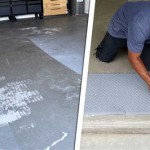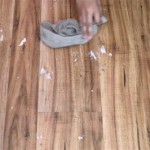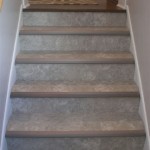Can You Put Vinyl Plank Flooring on a Wall?
Vinyl plank flooring has become a popular choice for homeowners due to its durability, water resistance, and affordability. While traditionally used for flooring, its versatility has led many to consider its application on walls. This article explores the feasibility and considerations of using vinyl plank flooring as a wall covering.
Advantages of Using Vinyl Plank Flooring on Walls
Several benefits make vinyl plank flooring an attractive option for wall applications. Its inherent water resistance makes it suitable for areas prone to moisture, such as bathrooms, kitchens, and laundry rooms. This resilience against moisture can prevent issues like mold and mildew growth, contributing to a healthier indoor environment. Furthermore, vinyl plank flooring is relatively easy to clean and maintain. Most spills can be wiped away with a damp cloth, simplifying upkeep and preserving the material's appearance.
Beyond practical advantages, vinyl plank flooring offers aesthetic versatility. The wide array of colors, patterns, and textures available allows homeowners to create diverse design schemes. From realistic wood grains to contemporary stone looks, vinyl plank can mimic various materials, offering design flexibility to match any interior style. This allows for seamless integration with existing décor or the creation of striking accent walls.
Finally, vinyl plank flooring is generally less expensive than other wall covering options, such as tile or natural wood. Its affordability combined with relatively easy installation can make it a cost-effective choice for DIY projects or budget-conscious renovations. This accessibility makes it an attractive alternative to more expensive and labor-intensive wall finishes.
Installation Considerations for Wall Applications
While installing vinyl plank flooring on walls shares some similarities with floor installation, several key differences must be considered. Wall applications require a different approach to adhesive. While floating installations are common for floors, walls necessitate a strong adhesive to support the planks vertically. Construction adhesive or a modified thin-set mortar specifically designed for vinyl plank are often recommended. Proper surface preparation is crucial for successful adhesion. Walls must be clean, dry, and level to ensure a secure and lasting bond.
Weight is another factor to consider. Thicker, heavier planks may require additional support, especially on large wall sections. Using furring strips or a backer board can provide the necessary support and create a more stable surface for adhesion. This added support can prevent the planks from sagging or detaching over time, ensuring the longevity of the installation.
Expansion and contraction, though less pronounced than with flooring, should still be accounted for. Leaving a small expansion gap around the perimeter of the wall allows for slight dimensional changes due to temperature and humidity fluctuations. This gap can be concealed with trim or molding, maintaining a finished and professional appearance. Failing to account for expansion and contraction can lead to buckling or warping of the planks.
Potential Challenges and Solutions
While vinyl plank flooring offers several advantages for wall applications, some challenges may arise. Seams can be more noticeable on walls than on floors, especially if the planks are not perfectly aligned. Careful planning and precise installation techniques are essential for minimizing seam visibility. Using a laser level and ensuring tight joints can help create a seamless and professional look.
Wall imperfections can pose another challenge. Uneven walls can make it difficult to achieve a smooth and flush installation. Surface preparation, including patching and sanding any imperfections, is crucial before installing the planks. In some cases, applying a thin layer of leveling compound may be necessary to create a suitable surface for the vinyl plank.
Finally, the durability of vinyl plank, while beneficial in many respects, can make it challenging to cut and shape for intricate wall designs. Sharp utility knives and appropriate cutting tools are essential for clean and accurate cuts. Pre-planning and precise measurements are vital for achieving the desired results, especially when working with complex patterns or shapes. Taking the time for accurate measurements and utilizing the appropriate tools can prevent costly mistakes and ensure a professional finish.

How To Install Vinyl Plank Flooring On Walls Europine

Tips On Installing Vinyl Flooring Walls Ll

Going Up The Wall Installing Flooring Vertically Floor Trends Installation

Diy Wood Accent Wall Using Vinyl Planks Love Renovations

Can Vinyl Flooring Be Used On Walls Home Expo Asia

Diy L And Stick Vinyl Plank Accent Wall Hometalk

Diy Wood Wall Under 40 Low Voc Vinyl Planks

Diy L And Stick Vinyl Plank Accent Wall Hometalk

Diy L And Stick Vinyl Plank Accent Wall Flooring On Walls Bedroom

Diy Wood Wall Under 40 Low Voc Vinyl Planks
See Also







